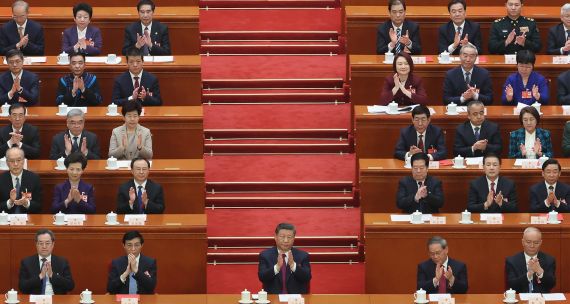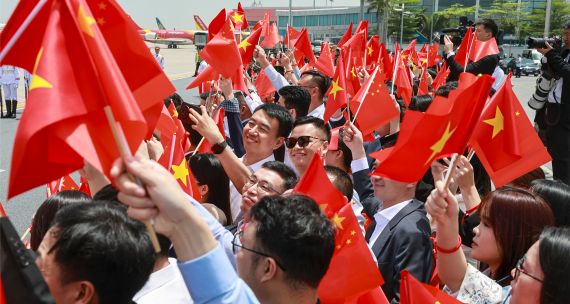On July 1, 2018 Canada announced C$16.6 billion in retaliatory tariffs on U.S. products, including steel and iron (25%) and a 10 per cent tariff on a long list of goods, including ketchup, detergent and aluminium. According to the Washington-based trade and economic consulting firm Trade Partnership’s March 2018 study, the impact of an ensuing trade war would reduce U.S. GDP by 0.2%, increase the number of U.S. steel-based jobs by 26,280, reduce net employment by 400,445 jobs, and would be unevenly shared amongst states, with the Mid-Western states of Ohio, Michigan, New York, Pennsylvania, and Illinois being particularly negatively affected.
This self-inflicted economic wound reflects an irrational approach to Canada-U.S. relations, including the basis and approach to renegotiating NAFTA under the Trump Administration.
Canada is America’s second largest trading partner at US$673.9 billion a year, with 15 per cent of U.S. products going to Canada at a value of US$341.2 billion annually. While President Trump claims that a trade deficit of US$12.1 billion exists between the U.S. and Canada, the U.S.’s own Office of the United States Trade Representative reports that the U.S.’s goods and services trade surplus with Canada was US$8.4 billion, with a US$17.1-billion goods deficit, in 2017.
Why then this apparent gap in understanding – and why is the U.S. slapping tariffs on Canada and some of its other closest friends and allies? Clearly the upcoming mid-term elections are on the mind of the mercurial president, as is the failure to close the rift in NAFTA renegotiations. The uncertainty surrounding any real take-home achievements from the Trump-Kim Summit last month may also be compelling the president to find creative ways to bolster his political prospects for November.
The president knows well that an acerbic stance on even Washington’s longest and closest friends plays well to his base and the motto of “draining the swamp.” For his supporters, the maverick president is doing exactly what they elected him to do, namely eschewing the failed orthodox public policy-making of Washington elites for an ‘American First’ approach that represents the interests of the socio-culturally and economically maligned workers of the U.S.
While these tactics play well to President Trump’s revolutionary base, they will not win friends or endear the U.S. to its long-standing allies and friends, including Canada.
The deeply integrated nature of the North American economy benefits Canadians, Mexicans, and Americans alike. U.S. tariffs of 25 per cent on steel and 10 per cent on aluminium shipments from Canada will fracture supply chains that have made steel and aluminium from North America more competitive in the global market. This will harm workers and producers on both sides of the border.
The self-harm that these tariffs will do to American workers is illustrative of the general irrational approach to trade by the Trump Administration in the application of tariffs, and to the NAFTA negotiation process in general. For instance, the increased costs of steel and aluminium used in small parts in the aerospace industry in the U.S., which employees approximately 2.5 million workers, may well result in a myriad of negative impacts on the U.S. aerospace industry’s global competitiveness.
Important employers in the automobile sector would also be affected as the integrated supply chains linking NAFTA members would be adversely impacted by the increased costs of steel and aluminium parts. With more than seven million jobs associated with the automobile industry in NAFTA, Trump’s tariffs could have diminishing benefits for the U.S.
Manufacturing and construction would also be detrimentally affected by tariffs as the cost for both would increase, compelling U.S. business to seek cheaper alternatives beyond its borders. With nearly 17 million workers in these industries, one wonders why the president would choose to increase tariffs on NAFTA members like Canada, as it will only serve to raise the cost of key materials needed in the infrastructure building underpinning President Trump’s campaign pledge of “Making America Great Again.”
With these realities in mind, after the sting of tariffs has hit home in the U.S., Canada should maximize that pain to demonstrate the benefits of the existing NAFTA agreement – and to advocate for rational changes to the existing NAFTA agreement that reflect the reality of the globalized economy today, and the advent of previously non-existent technologies and industries such as the Internet and shale gas.
Now almost 25 years old, the original NAFTA agreement was promulgated when the Chinese economy was just beginning its phenomenal growth. Today, China is the world’s factory and because of its enormous labour capacity and expansive production network, it has naturally been a magnet for the inexpensive production of consumables for North America, and in particular for the U.S.
In the process of renegotiating NAFTA with the U.S. and Mexico, a recalibrated agreement should reflect the reality that manufacturing in North America cannot compete with China. Instead, a NAFTA 2.0 should focus on North America’s comparative advantages and maximize existing synergies. It also needs to reflect the increased sophistication of our economies due to emergent technologies such as improved automation, the Internet of Things (IoT), big data, and the coming artificial intelligence (AI) revolution.
While Trump may talk about renegotiating NAFTA, Prime Minister Trudeau needs to outline a vision of NAFTA 2.0 that has two objectives. The first is to create an agreement that reflects the reality of today’s economic imperatives, but also accounts for those technological advances that will shape our economies over the next 25 years. These new economic imperatives will dramatically affect our workforce and concepts of employment. The second is related to the consequences of these disruptive technologies, finding new and creative ways to represent the interests of the socio-culturally and economically maligned workers today and into the future. This would serve Canada’s interests, but also the interests of Trump’s core constituency.
Stephen R. Nagy is a senior associate professor at the International Christian University based in Tokyo. Concurrently, he is a Distinguished Fellow with the Asia Pacific Foundation of Canada and an appointed China expert with Canada’s China Research Partnership.



